Address change to reviews.pivic.com
This site is changing its address.
When Kurt Vonnegut set out to write ‘Slaughterhouse-Five’, he had survived many bombings of Dresden during World War II. He survived a prisoner’s camp afterwards, and he survived post-traumatic stress disorder.
The author’s two-decade struggle to write a book that depicts the trauma of war truthfully, without cheapening it, anticipated the PTSD diagnosis. “Slaughterhouse-Five is the ultimate PTSD novel,” says Duke University professor and psychiatrist Harold Kudler, who was the chief consultant for mental health for the U.S. Department of Veterans Affairs (VA) from 2014 to 2018. “It is a fully rendered metaphorical exploration of what it means to be ripped out of your own person, relationships, place and time written by a man who had actually experienced this.”
Vonnegut’s life was, at more points in time than one, in shambles. He struggled to make ends meet for his family and was nearly forced to stop writing. If not for the all-too-common combination of luck and the good will of others Slaughterhouse-Five might not have seen the light of day.
Vonnegut would often call himself a “hack,” a writer who’d do anything for money. He would work in the mornings for several hours and then go for walks with his dog. He was churning out stories, which Jane would send out to editors. And then she would compile an ever-expanding file of rejection slips.
The funniest thing about this book is its beginning: It’s like skipping a stone across a pond, just as you release it and realise the stone is either just a pebble and will not even bounce twice, or that it’s far too big and round, just ruffles the surface, then sinks.
One example of this is a strange anecdote that takes up far too much space in the book, simply because it’s not verifiable: after the war, did Vonnegut seek out and murder a former Nazi? One can argue that Vonnegut could have perhaps himself have laughed at that theory because of how weird it was, but to myself, it appears out of place: it’s hearsay, even though it makes for an interesting tale.
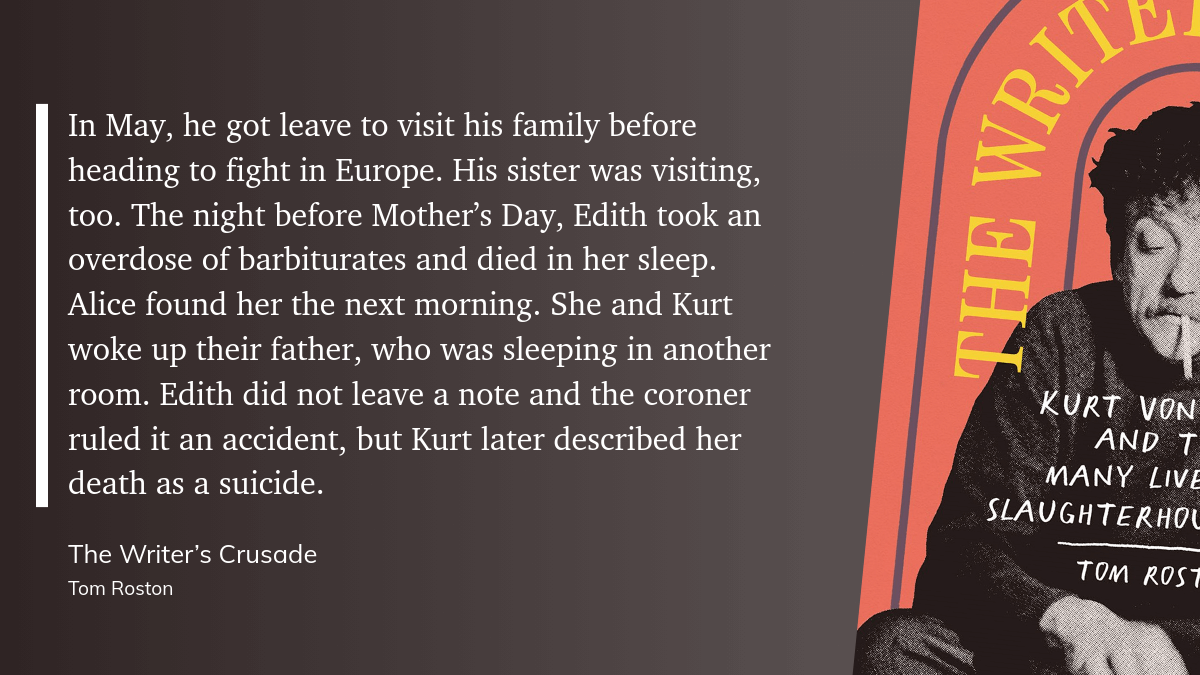
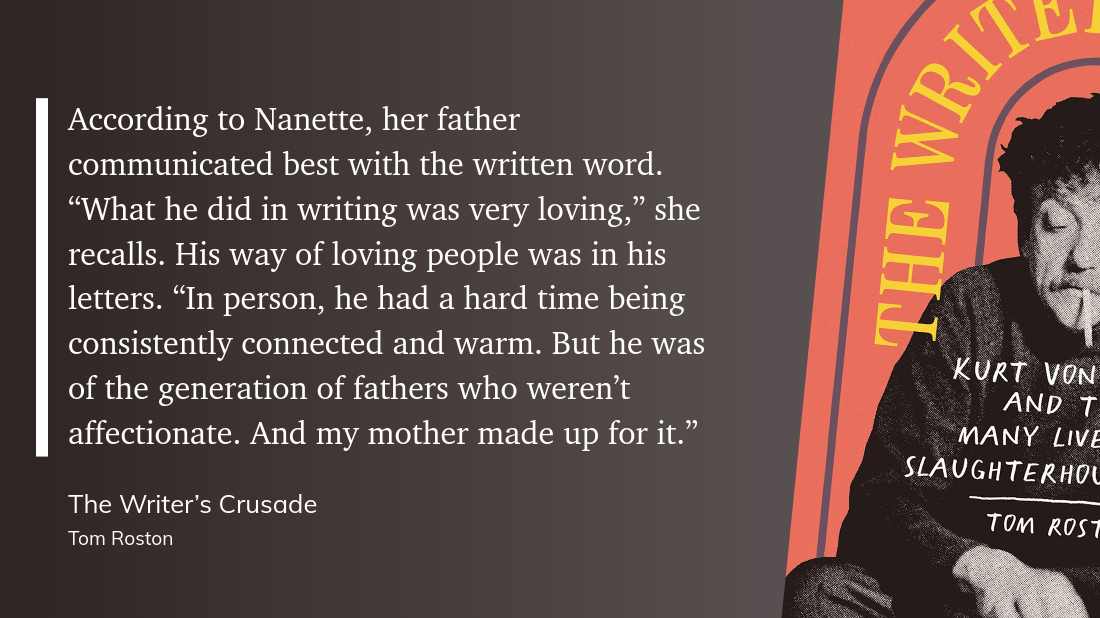

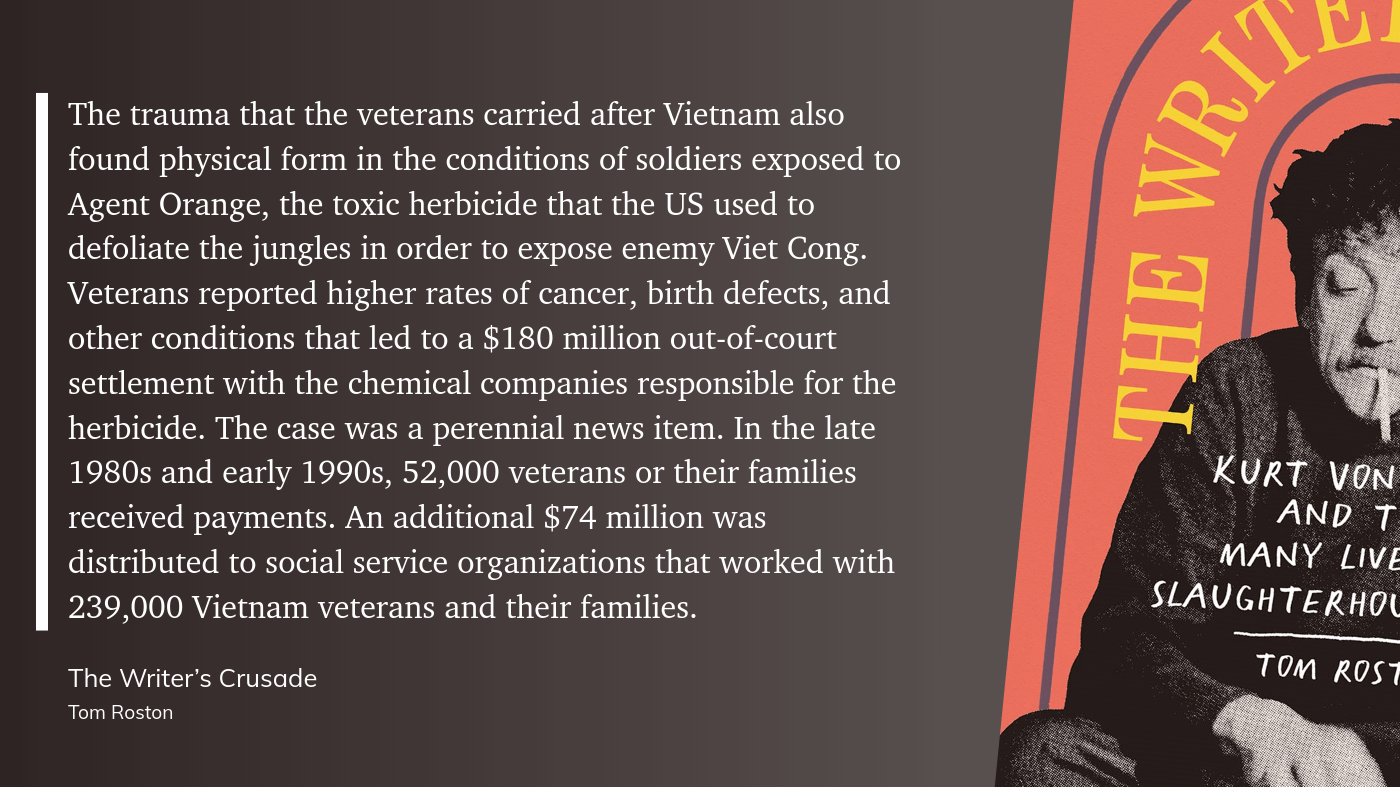
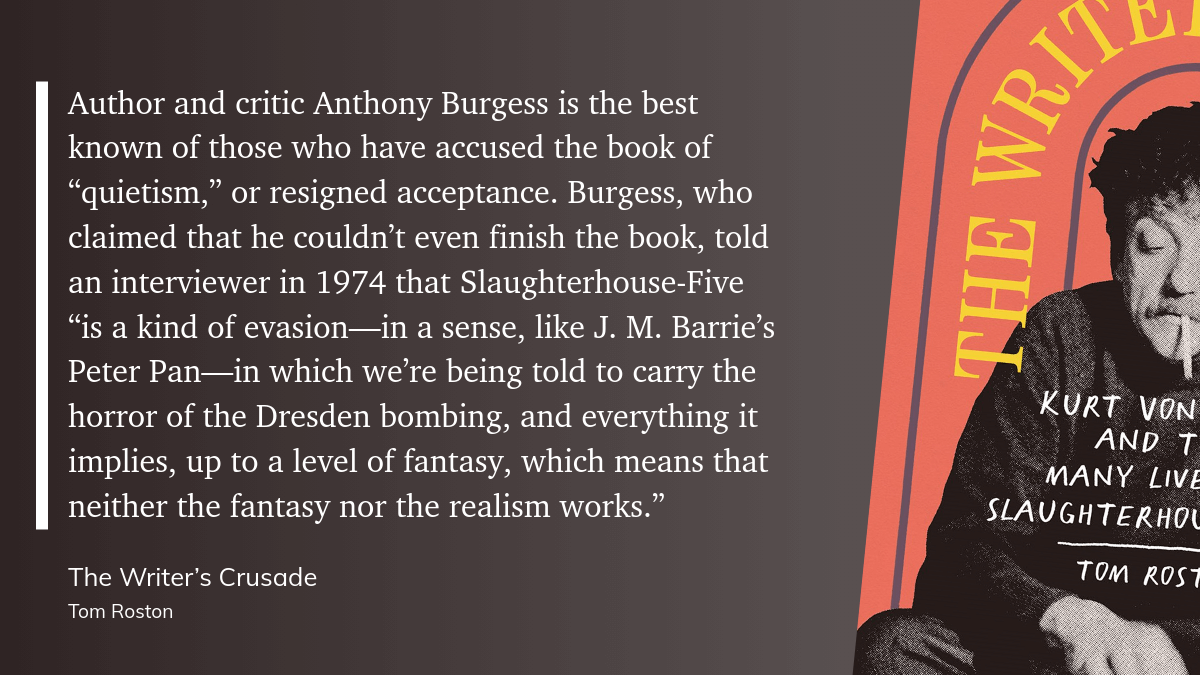
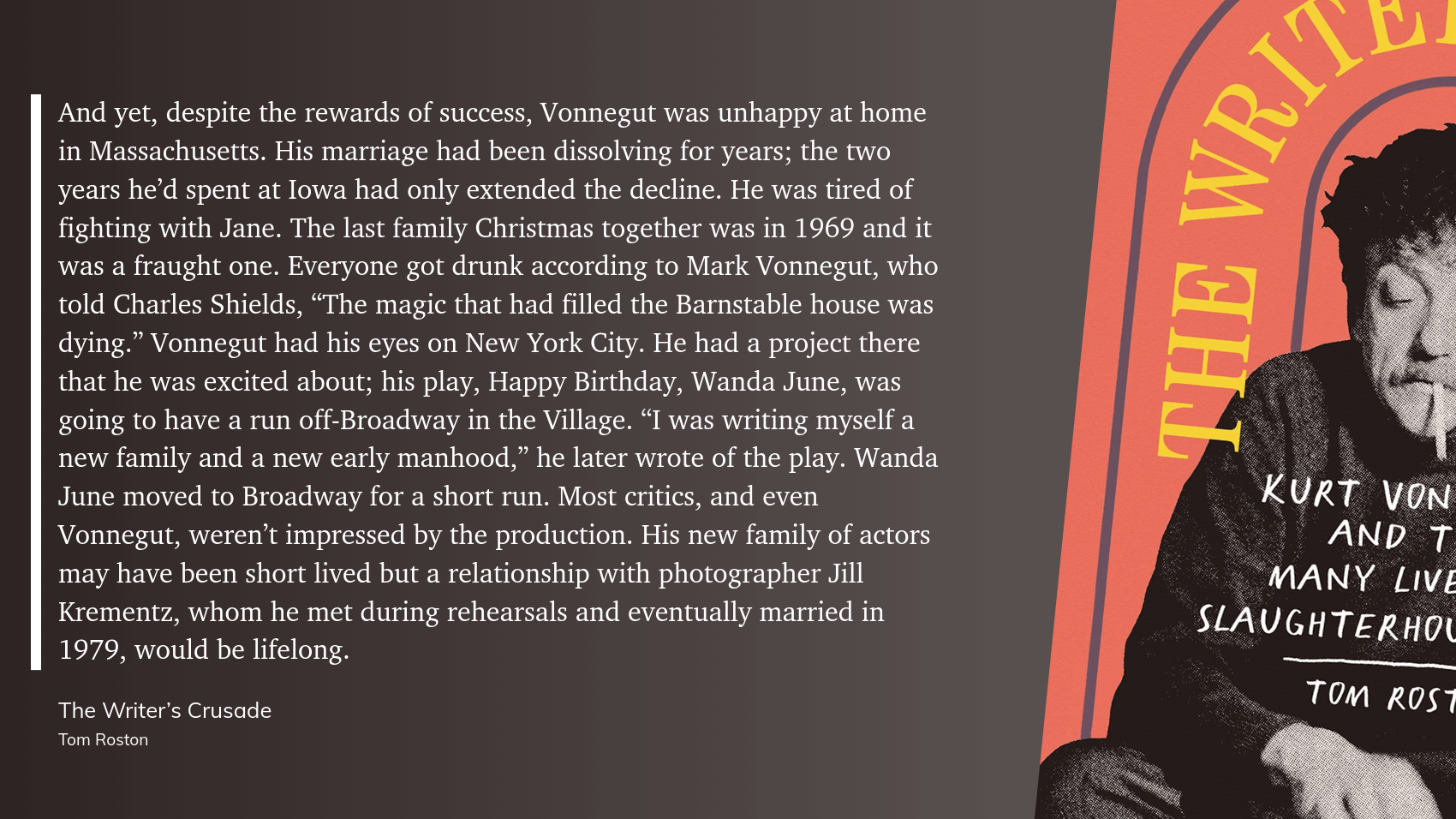
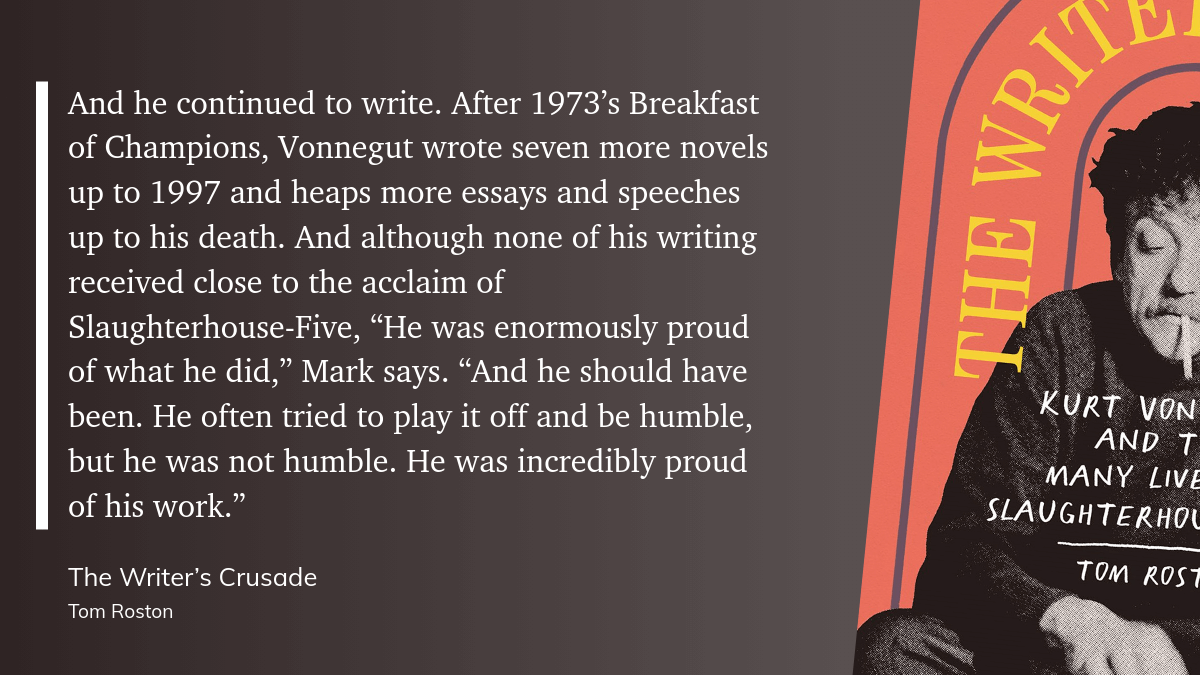
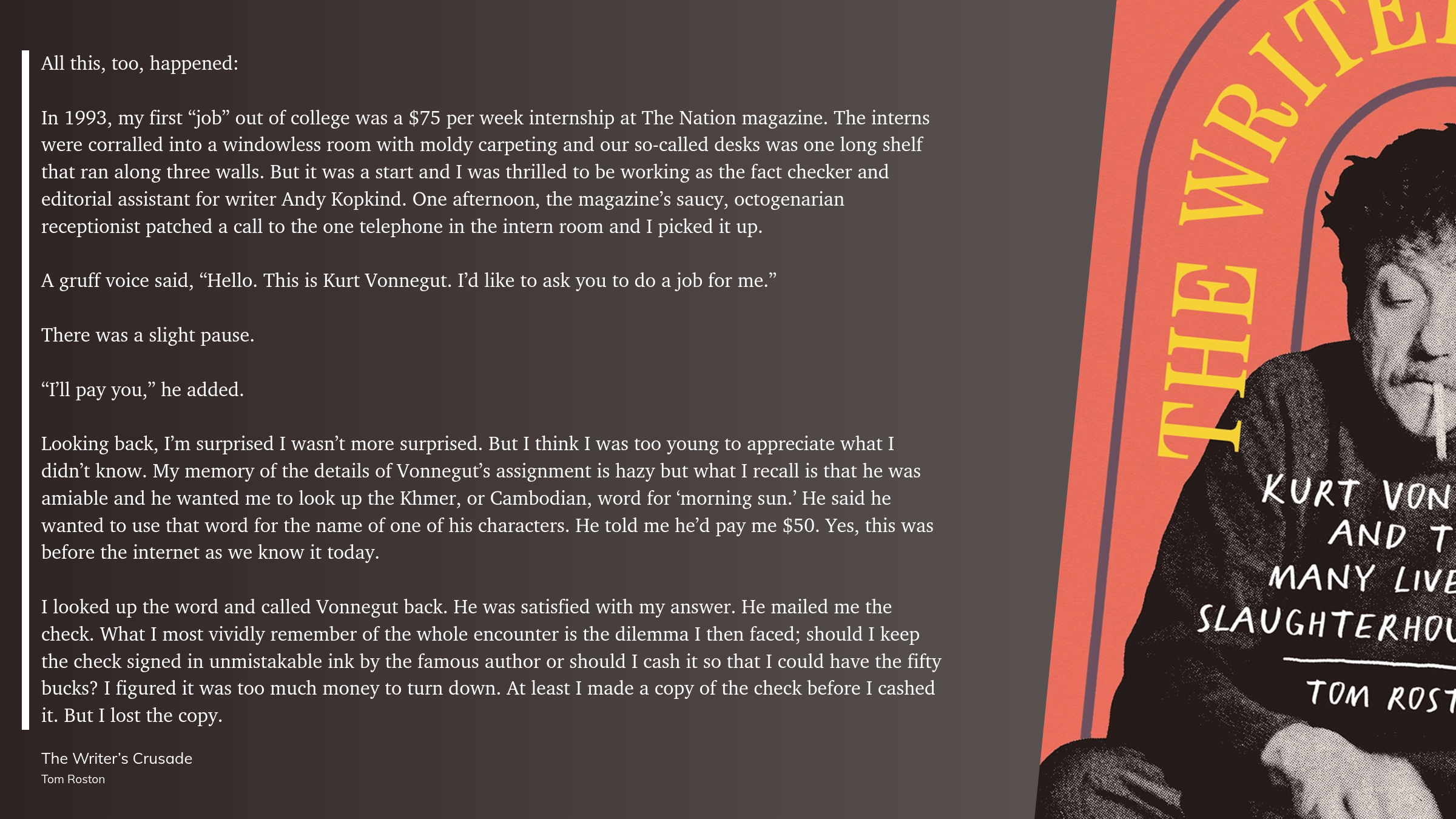
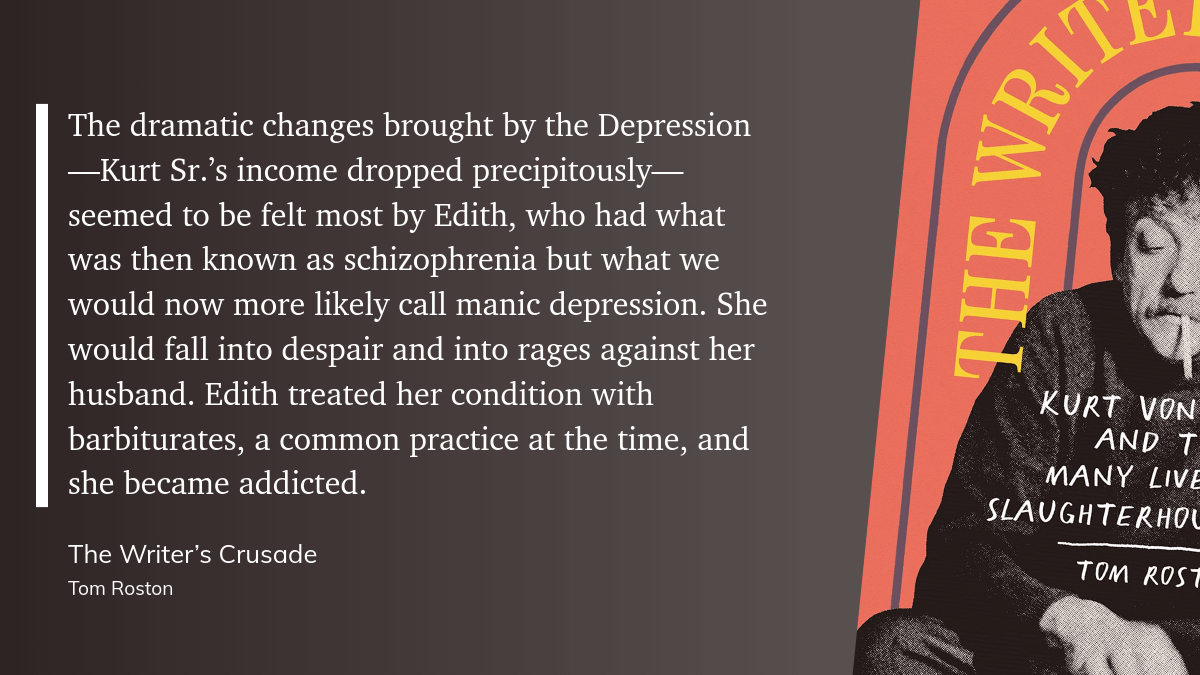
This book wouldn’t make any real mark if it weren’t for the rest of it. Roston’s force as a writer comes into play when he turns into chronological biographer, delving through Vonnegut’s life, which was interesting. For example, Vonnegut was mourning his father when both his sister and brother-in-law died:
And then, just a year after his father’s death, his sister, Alice, began to succumb to cancer herself. On September 15, 1958, she was on her deathbed at the hospital when her husband, Jim Adams, took a New Jersey commuter train from their home to a business meeting. But the train’s engineer had a heart attack causing the train to derail into a river, killing forty-nine people, including Adams. Alice died thirty-six hours later. The shock and tragedy of his sister’s and brother-in-law’s deaths had a profound effect on Vonnegut, far more than the war according to the author, who was so close to Alice that he considered her his first muse, the audience of one that he wrote all of his books for.
His family adopted his sister’s three children.
It took Vonnegut nearly twenty-three years to turn in his final draft of Slaughterhouse-Five. In-between the end of World War II and that, he wrote a few different books that were received fairly well. Most of his waking time was spent hunched over his typewriter.
Vonnegut’s discipline as a writer could be heard and smelled in the house. There was the constant sound of his Smith-Corona clanking away. And the strong bouquet of coffee and Pall Malls permeated his quarters. With so many kids running around, he seemed to be in a world removed. “Working his ass off, sitting still,” Nanette says.
Roston goes deep into two trails: tracking down known and potential inspirations for characters and scenes in Slaughterhouse-Five and trying to explain how PTSD relates to the book. To myself, both trails lead on for too long, especially regarding PTSD: it’s too isolated to related to Vonnegut and too superficial to be of clinical interest. If you want to read about PTSD, there are far more interesting books out there.
This book is an interesting ride, albeit not nearly as good as Suzanne McConnell and Kurt Vonnegut’s Pity The Reader that was published not long ago. Still, they’re two different animals.
If you carry deep interest in Slaughterhouse-Five, PTSD, and a brief history of Vonnegut’s life, this is a book for you. Would I recommend it for people who want to look into the complexities of life and how Vonnegut turned out the way he did? No, I wouldn’t; Then, this book is not for you.
I can’t help but think of Barry Miles’s Call Me Burroughs: A Life, a very deep dive into all of Burroughs’s life. I wish this book had carried just as many lives.
The Writer’s Crusade: Kurt Vonnegut and the Many Lives of Slaughterhouse-Five is published on 2021-10-12 by Abrams Press.
